By Dan Weisz
The Great Horned Owlets in The Clusters nest are getting very close to flying on their own. (Again, these observations are being repeated in neighborhoods all around the Foothills with Great Horned Owls that are roosting throughout the Foothills) The last time I posted, the owlets were beginning to spread their wings and walk off of the nest, but always remained nearby. We have a nice “window” into the nest and can watch the birds’ behavior for the last half hour before sunset. Prior to the previous posting, the birds would begin to get active about a half hour before sunset, raising their wings, perhaps flapping their wings, and moving all around the perimeter of their nest. This week, the behavior has changed. Now, they sit still until after sunset. They seemed bored or perhaps they are just waiting. But about fifteen minutes after the sun sets, the action begins. Below are photos from several nights this week to demonstrate these changes.
On the nest, the two owls could not look any less excited.
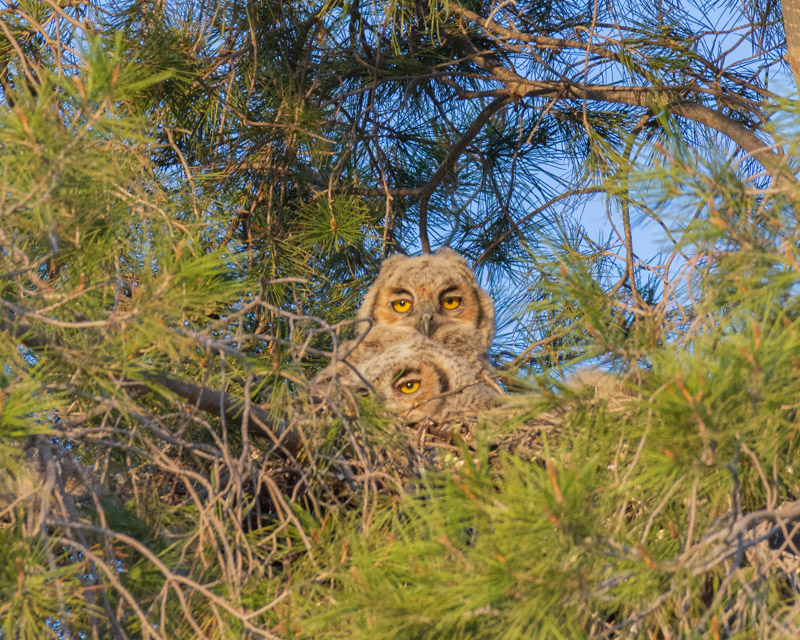
One of the owls perched side-by-side with mom. In this photo, you can see its nictitating membrane closing over its eyes. The nictitating membrane is a translucent (third) eyelid that can be drawn across the eye for protection or to moisten the eye while maintaining vision.
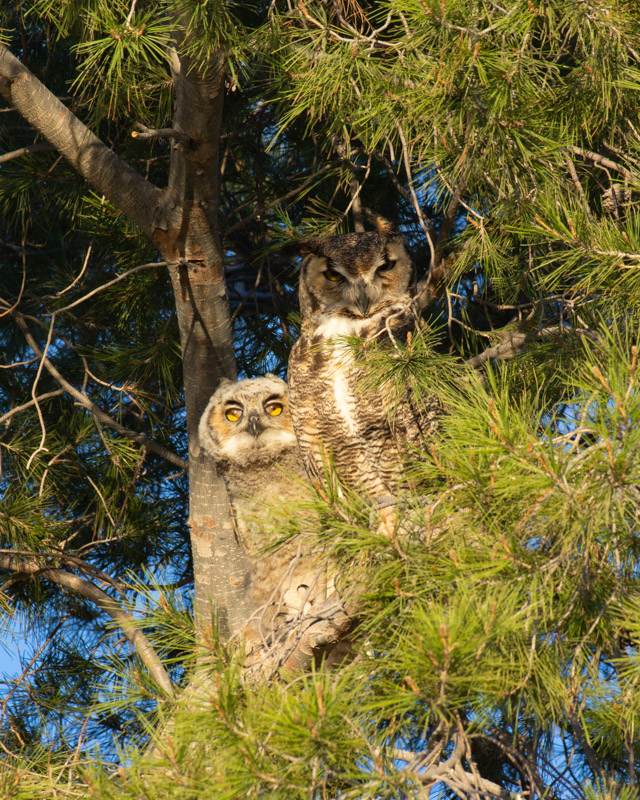
The owls have been on the nest all day long in 90+ degree heat. By the end of the day, they are working to cool down. We can observe open-mouthed ‘panting’ and a wingspread that helps to cool down the birds.
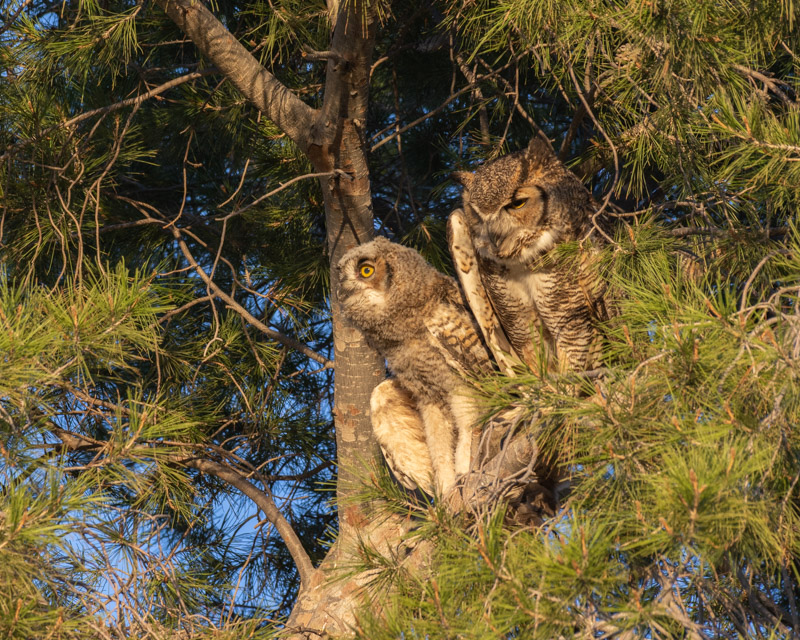
All owls, including this Great Horned Owl, bob their heads to make up for an anatomical limitation. An owl’s eyes are fixed in position- they can’t move the was a human’s eyes do. Owls bob their heads to help judge the position and distance of things around it. They are triangulating objects to make sure they know exactly where in space the object is. Having 14 vertebrae in their neck certainly helps provide a wide range for head movement too. (We humans only have 7 vertebrae in our necks.)
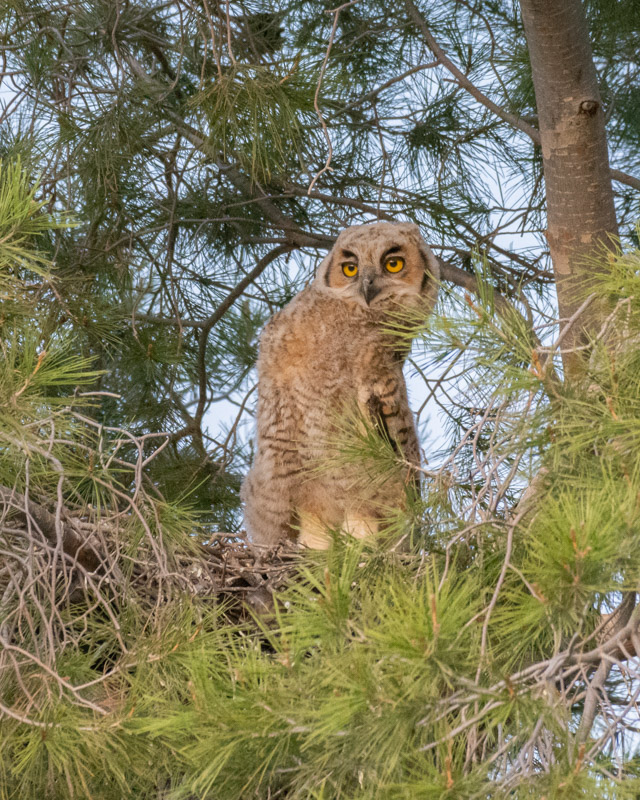
Wing flapping exercises continued, but are now only beginning after sunset. There is virtually no movement on the nest before the sun goes down. This photo was lightened in order to see the bird.
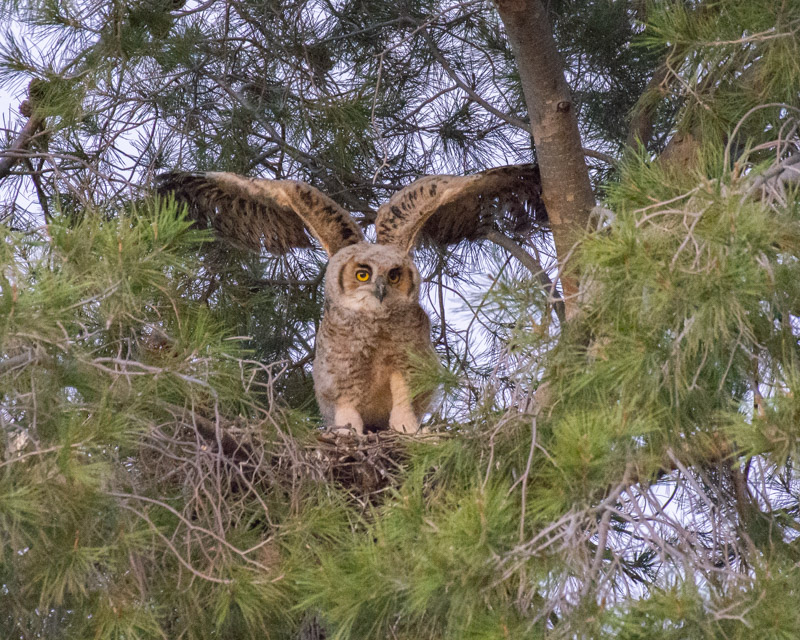
Now, this week, the birds are definitely leaving their nest after sunset. Each young Great Horned Owl will make a move to one extreme side of the tree or another. This owlet walked and hopped, tiptoeing along a branch to get to the end where it began flapping its wings furiously.
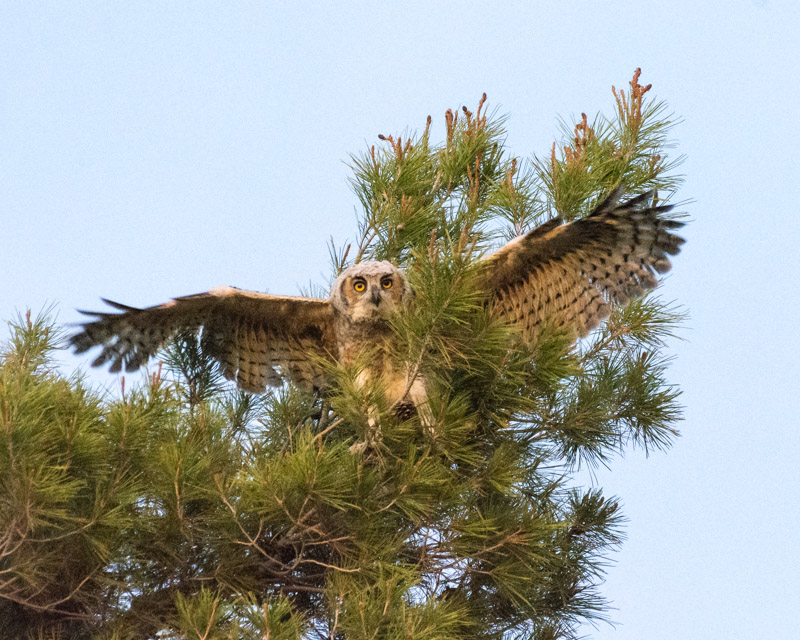
And the next day, again, no movement during the daylight hours before sunset. They look bored!
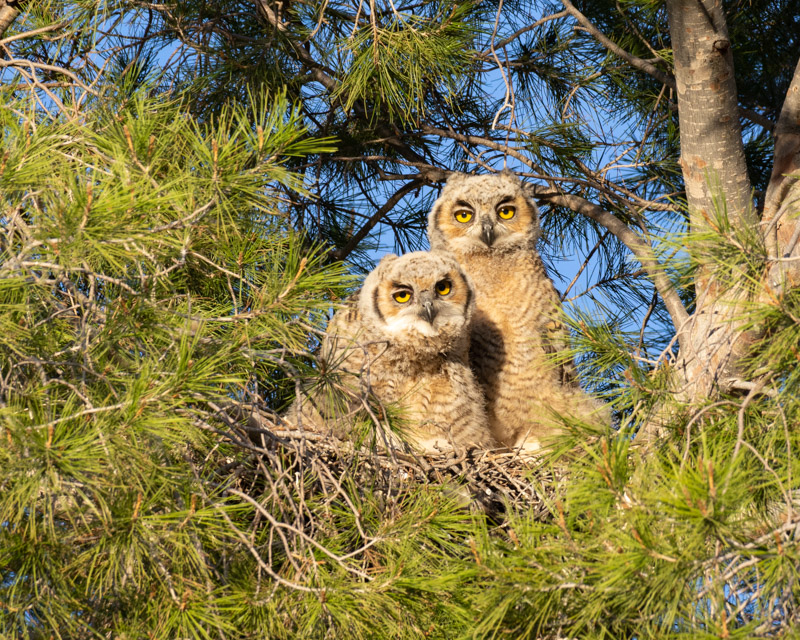
In the past, we’ve observed the owls yawning. This day the action looked decidedly different. Each owlet would shake its head vigorously back and forth before opening its mouth very wide. This was repeated several times by each young owl. Rather than yawning, these owlets were probable trying to cough up a pellet. Young owls are provided small pieces of food by their parents. Once they begin eating their prey whole, then they will produce pellets. Owls cannot chew their food, they will swallow their smaller prey whole. Indigestible parts of their prey (bones, teeth, fur and feathers) remain in the gizzard while the softer parts of the food pass through the bird. The gizzard forms the indigestible parts into a pellet which must be expelled before the birds are able to eat any more. So this behavior told us that the owl young were beginning to eat larger prey whole, another sign of development.
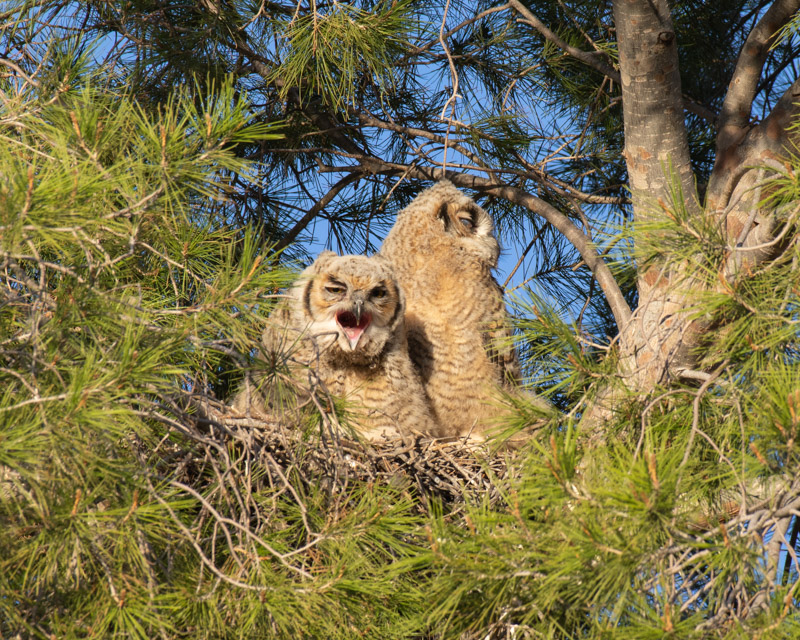
First one owlet and then the other shook its head violently and then opened its mouth very wide.
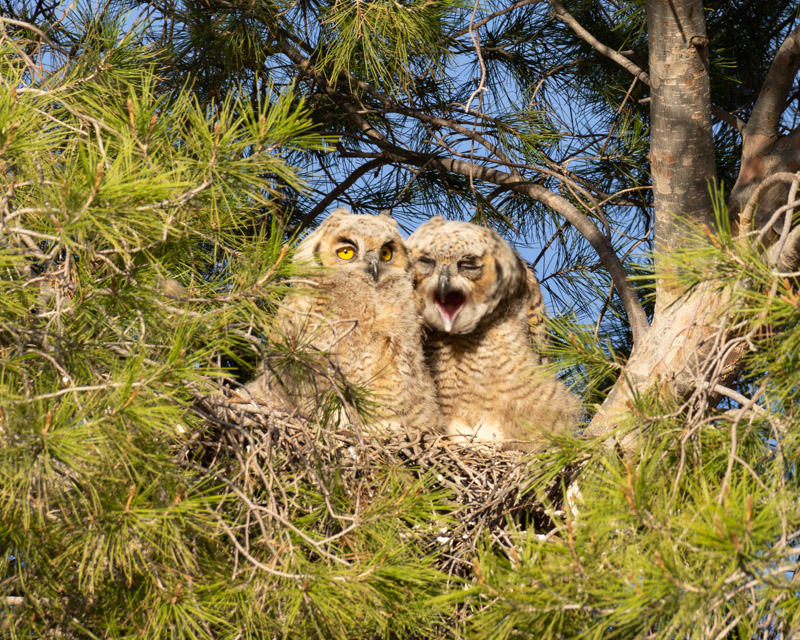
This looks like another photo you’ve seen, but this is from another day. Again, the birds are flapping and must be learning from each other. (This is another post-sunset photo lightened for our viewing.)
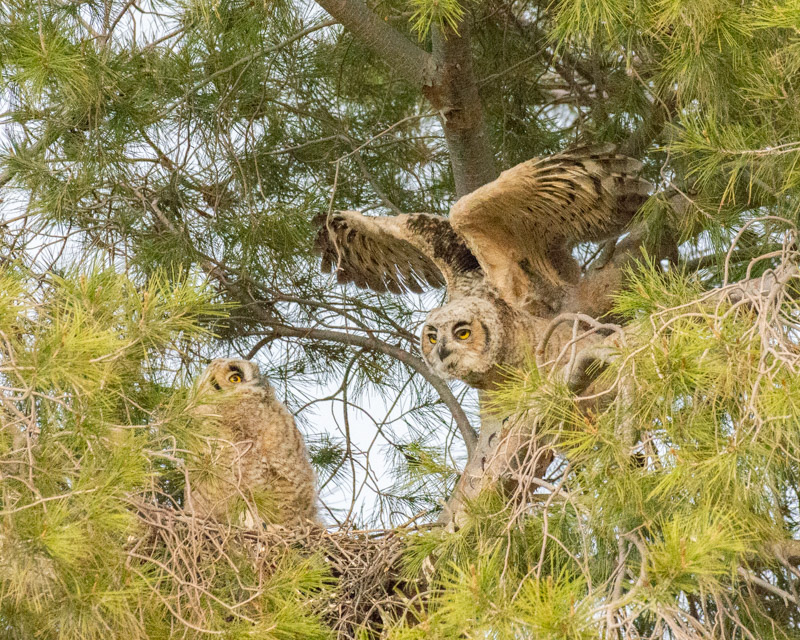
And then this bird moved to the ‘left’ side of the tree. it would perch quietly, then begin flapping its wings over and over again. All of this action occurred after sunset.
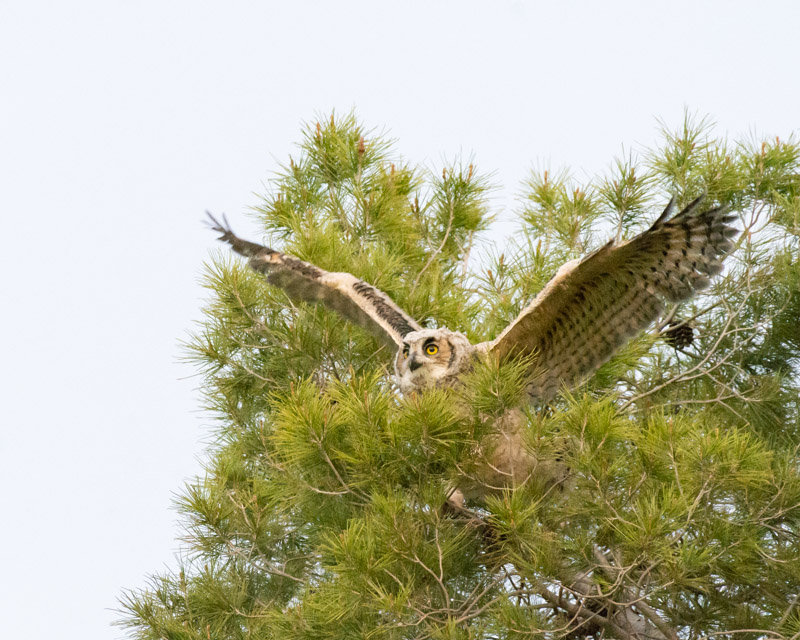
And Mom still keeps a close watch over her young. She spends the days in the tree with them but, about a half hour after sunset, she moves to the top of the tree and then flies off into the desert. Whether she is hunting, just off to stretch and cast her pellet, or off to contact her partner and tell him to begin hunting, we are not sure. But that is how the Owl family’s day ends and their night begins.
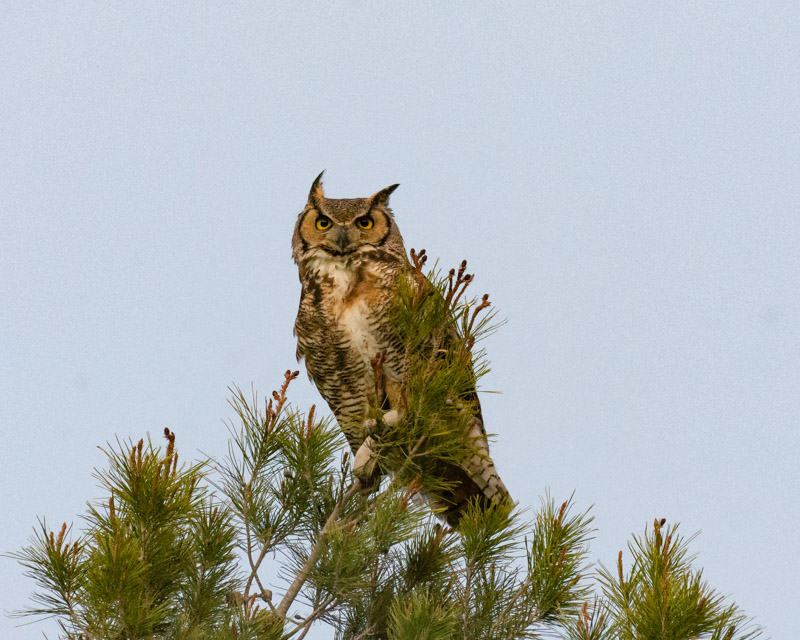
And more to come. The owls are likely to leave their nest tree permanently any day now.
Return to Foothills Clusters Home
